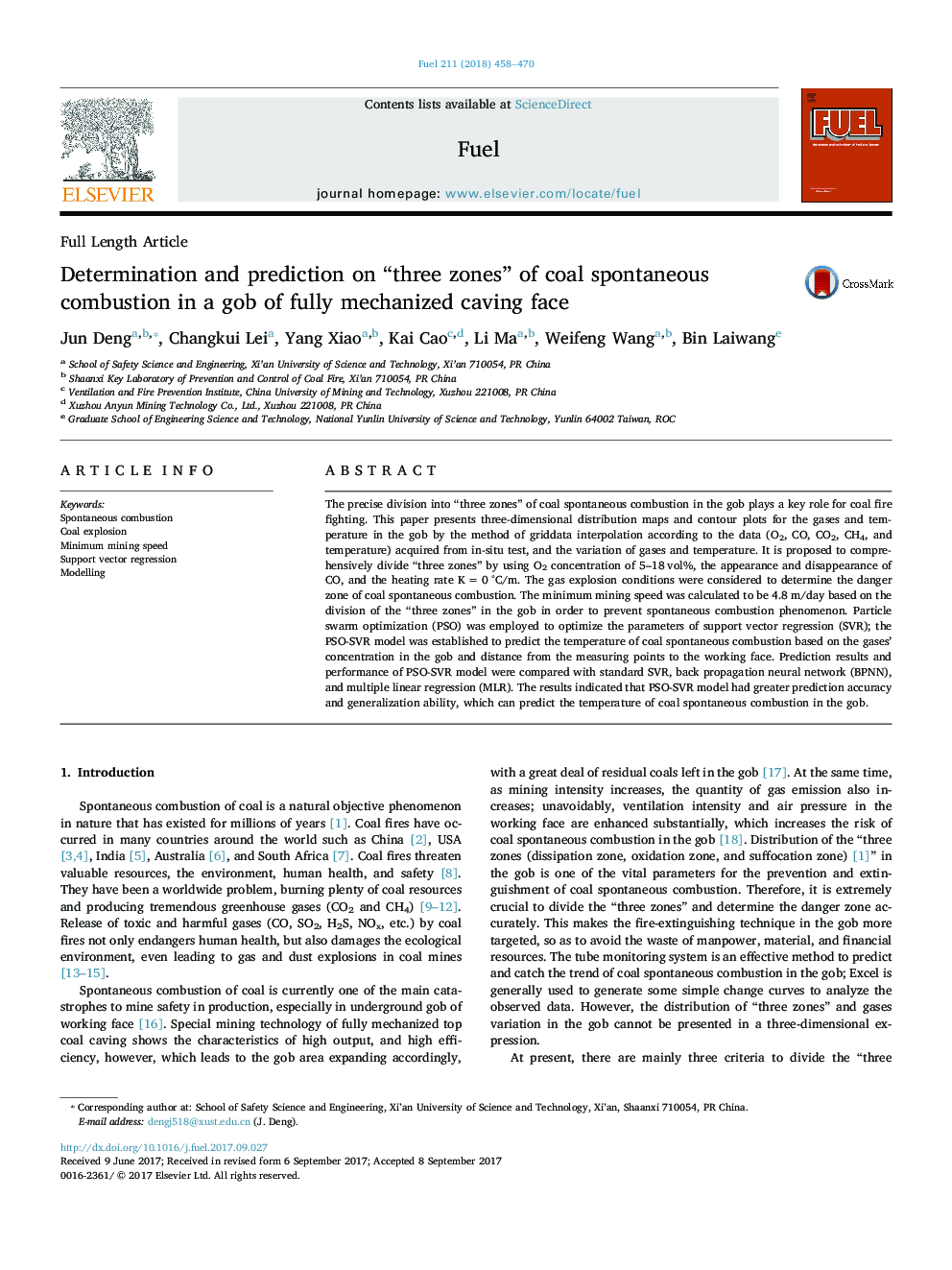| Article ID | Journal | Published Year | Pages | File Type |
|---|---|---|---|---|
| 6473511 | Fuel | 2018 | 13 Pages |
â¢Three-dimensional distribution maps and contour plots were generated.â¢A method on comprehensive division of “three zones” in gob was established.â¢Minimum mining speed to ensure safety of gob was calculated to be 4.8 m/day.â¢Support vector regression was applicable for temperature prediction in the gob.
The precise division into “three zones” of coal spontaneous combustion in the gob plays a key role for coal fire fighting. This paper presents three-dimensional distribution maps and contour plots for the gases and temperature in the gob by the method of griddata interpolation according to the data (O2, CO, CO2, CH4, and temperature) acquired from in-situ test, and the variation of gases and temperature. It is proposed to comprehensively divide “three zones” by using O2 concentration of 5-18 vol%, the appearance and disappearance of CO, and the heating rate K = 0 °C/m. The gas explosion conditions were considered to determine the danger zone of coal spontaneous combustion. The minimum mining speed was calculated to be 4.8 m/day based on the division of the “three zones” in the gob in order to prevent spontaneous combustion phenomenon. Particle swarm optimization (PSO) was employed to optimize the parameters of support vector regression (SVR); the PSO-SVR model was established to predict the temperature of coal spontaneous combustion based on the gases' concentration in the gob and distance from the measuring points to the working face. Prediction results and performance of PSO-SVR model were compared with standard SVR, back propagation neural network (BPNN), and multiple linear regression (MLR). The results indicated that PSO-SVR model had greater prediction accuracy and generalization ability, which can predict the temperature of coal spontaneous combustion in the gob.
Graphical abstractDownload high-res image (262KB)Download full-size image
